#passerculus posting
Explore tagged Tumblr posts
Text

parrow
21 notes
·
View notes
Text
The State Birds Initiative: Georgia (#4)
Welcome to the fourth official poll of the State Birds Initiative! Before the poll, though, one thing real quick. My suggestion is that you read the post below before voting in the poll below. That's especially important if you're lacking any context about the birds being presented as the new (or old) State Bird of the Peach State, Georgia. This is to be fully informed as to why these are being presented, and to make your choices appropriately. Lastly, some of these birds, you will notice, may go against some of the rules listed in the introduction post. All is explained after the jump where the explanations are, I promise you that. But with that...OK! Here's the poll!
With that...time to put Georgia on our minds!

Georgia! State of peaches, Coca-Cola, pecans, and civil rights! Home of Ray Charles, Jimmy Carter, Jackie Robinson, and the great Martin Luther King, Jr.! Location of the only whale shark in captivity in the country, the historic Forsyth Park of Savannah, the majestic Stone Mountain, and the first Chick-fil-A! And for our purposes here in the State Bird Initiative, it's also the first state we're looking at with a tropical climate! Well, a humid subtropical climate, actually, but it counts! If you've ever been to Georgia (which I haven't as of yet, but I'm working on that), you probably know that Georgia is a bit sweaty and temperate most of the year, with long humid summers and high water levels.
In terms of the ecology of the state, we're looking at swamps, cedar-dominated, as well as having a decent proportion of pine trees. Actually, to be specific, we're looking at forests of Longleaf Pine (Pinus palustris), an large endangered pine tree species endemic to the southeastern United States. Now, to be clear, this species isn't specific to Georgia, and it's actually the state tree of Alabama. However, now that we've hit the southern USA, we have to address it, as the tree is a symbol of the region. The actual state tree of Georgia is another iconic tree to the southeastern USA, the Southern Live Oak (Quercus virginiana), another big tree evolved to be resistant to forest fires, saltwater, and hurricane-force winds common in the area. Famously, the Southern Live Oak trees of St. Simons Island, Georgia was harvested for the density of their wood, which made them particularly strong against cannonballs. Said wood was used to construct the famous U.S.S. Constitution, AKA "Old Ironsides", which was said to have cannonballs actually bounce off of it throughout the War of 1812. Said ship is still in Boston Harbor to this day, making the 227-year old ship the oldest still floating naval warship in the world! And that's all thanks to the natural environment of Georgia.

What about Georgia's culture? Historically, of course, Georgia is complicated as hell. A former seat of the Civil War and the Confederacy, the state has seen heavy reconstruction in the last century and a half, eventually becoming associated with many civil rights heroes, and currently having a few prominent bastions of the Democratic Party, such as Atlanta. On a contemporary level, the state is famous for its music, its accents, and its food! The state has at least four foods as state symbols - peaches, peanuts, grits, and the Vidalia onion, and has other iconic food and drink like sweet tea, cornbread, peach cobbler, and fried catfish.
As for its people, they're a highly religious bunch on average, known for their hospitality and, according to some accounts online, "polite sarcasm". Y'know, "bless your heart" and all that. Conservative historically with an increasing population of Black Democrats in metropolitan centers, it's a growing state in terms of diversity, and changing rapidly. So...a culturally diverse bird that lives in oak trees? Yeah, that's a target we're gonna hit for sure. I mean, the oak or pine tree part is pretty easy, but the other thing? Well..a songbird would make some sense. I mean, the state is famous for its musicians, ranging from OutKast to Gladys Knight to 2 Chainz to Luke Bryan, and more. So, something that sings is a solid choice. There are a couple of other qualities we can go for, but that's enough for now, I think.

With that, let's move onto the choices. Got some interesting ones this time, but I have...a hunch about this one. We'll see how this goes, but I have a feeling it's gonna go the way of New Jersey's poll, which has been...decisive. But OK, with that...birds after the jump!!!
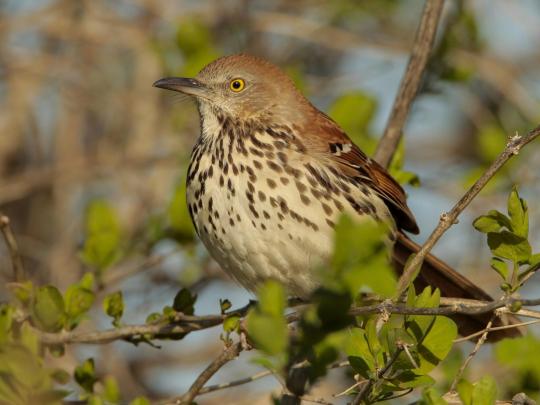
Brown Thrasher (Toxostoma rufum)
Not gonna lie - this one could be hard to beat, surprisingly. Which is too bad for a number of reasons, but the Brown Thrasher (Toxostoma rufum) isn't really a horrible choice for Georgia's State Bird. It breeds in the state, even though it's found all over the eastern and central USA. It's an iconic bird in sight and sound, which is pretty important for a state that's produced a lot of human singers. I even mentioned up above that a songbird wouldn't be a bad choice, and what better songbird than one who can memorize, mimic, and remix multiple sounds for its own use? Plus, it was chosen by school kids, meaning it was elected by the public. Of course, to be fair, it was also chosen by governor at the time, Eugene Talmadge, a famous white supremacist who enforced segregation in Georgia schools and universities, openly supported Adolf Hitler, and was a genuinely extremely racist PIECE OF SHIT...but I digress? Although, it is extremely ironic that Talmadge ratified the Brown Thrasher as the State Bird of Georgia, so there's that.
OK, Talmadge doesn't really have anything to do with this, I just needed to get some anti-racist anger out for a second there, sorry; dude was a bastard in a lot of ways. But in terms of the Brown Thrasher, it's honestly not a bad choice for Georgia. Thing is...I'm not entirely sure I can say it's the best choice, or even a really good choice, frankly. It's...a choice. It does eat peaches, though, so maybe throw that into the pros pile for the species. Oh, and one more thing: it's defeated an attempt to depose it before. The frankly kinda ridiculous attempt to change the State Bird of Georgia to the Cornish Chicken in 2010 was not received well for the chicken. Georgians liked their Thrasher too much! Also, one of the arguments against the Brown Thrasher that the Flip the Bird movement put forth was that it "has no contribution to the state of Georgia economy". Of all the stupid goddamn arguments...
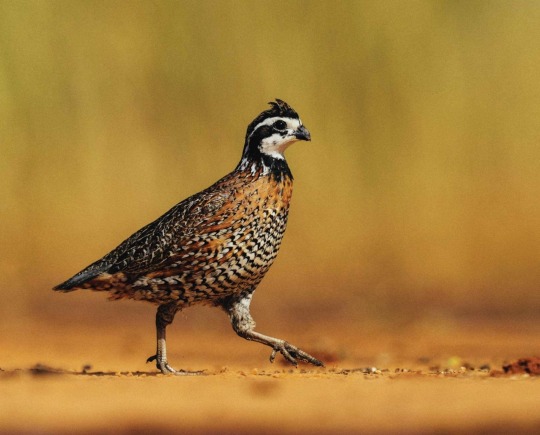
Northern Bobwhite (Colnius virginianus)
Well, if we're talking about the incumbent State Bird, we should bring up the incumbent State Game Bird as well! Yeah, this'll be a regular thing going forward. Any ornithological state symbols are up for bid and re-election, although this is a slightly different process. If a State Game Bird is elected as State Bird, it will ascend to that post, and a new State Game Bird will be proposed, possibly with a new poll. However, if it is not the chosen State Bird, it'll remain as the State Game Bird. So, really, the Northern Bobwhite gets to stay where it is...for now. This may change as we get overlapping game birds across the USA. And we will, believe me. With that said, let's talk about the Northern Bobwhite (Colinus virginianus).
A member of the New World quails (Odontophoridae) the bobwhite is named after its iconic whistling call, and not a random dude named Robert White. The Northern Bobwhite isn't the only species of bobwhite quail by any means, but it's the only major native representative in the USA. It's a grassland and open forest-loving quail whose range extends from Texas to Massachusetts...kind of. Here's the problem with the bobwhite: its population is rapidly decreasing. In the past 60 years or so, the population's decreased by at least 85% in its native range, which is...A LOT. It's partially for that reason that the species is on my priorities for my Life List, because I've never seen them, and they're rapidly vanishing.
youtube
That, alongside the normal ecological concerns and links, and its relatively new status as a threatened species due to land use and forest fires, makes it a good candidate for recognition on its own. But is it a good bird for Georgia? Well, only 4% of its breeding population is found in the state year-round, making the state a poor reservoir for the species. There's also a point that the bobwhite is, surprisingly, an invasive species in some countries, specifically New Zealand and Italy. They're also a common bird in captivity, even though any aviary should have them be the only ground-dwelling bird, since they can be aggressive to competitors. That said, they're not a completely doomed species.
More importantly, though, the fact that Georgia doesn't have a lot of these guys immediately makes them a less-than-ideal candidate for State Bird. State Game Bird, though? That might actually be worse. Remember, this is an endangered species, meaning it may not be a bird we should glorify as a food source. In fact, the Georgia Department of Natural Resources has conservation measures in place to protect bobwhite and their habitat, also seeking to restore it and add new potential habitats for the species. And they aren't eliminating hunting of the species, but are strictly managing and monitoring populations. And there is merit to managed hunting, for the record, but that's a separate conversation to be had. So, not a horrible choice to remain as Game Bird. But who knows? Maybe I'll make a separate poll to ask this question after all. If that's something that interests you, let me know! For now, let's move on.
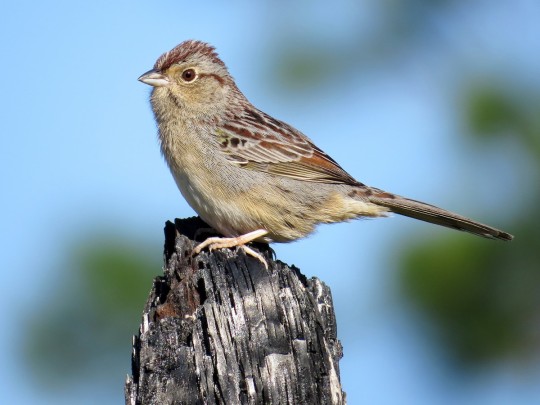
Bachman's Sparrow (Peuacea aestivalis)
On to the eBird suggestion! And this one is...ooooooooh...yikes. OK, yeah, you may remember my issue with the Saltmarsh Sparrow (Ammospiza caudacutus) as a potential State Bird for New Jersey, mostly revolving around the idea that it wouldn't be easily recognizable by the public, unaffiliated with sparrows and their subtle or major differences. This? This is worse. Once again, don't get me wrong, Bachman's Sparrow (Peuacea aestivalis) would be a dream for me as a birder, as a southern exclusive species and a lifer for me personally. But for the average layman? This is a bird difficult to identify for birders! Not sure the average non-bird person has a chance, to be honest.
But just to be completely comprehensive, why the Bachman's Sparrow? Well, the eBird article quotes the species as having a large breeding population in Georgia. However, to be completely fair, the species mostly breeds in Florida, not Georgia (48% vs. 30%, by recent calculations). That said, the number of Bachman's Sparrows breeding in Georgia isn't a number to sneeze at. As for its ecology, it specializes in pine forests, including those composed of longleaf and loblolly pine, which have Georgia as a major habitat. Oh, and on a historical note (not that this matters too much), John Bachman was an opponent of segregation and racist eugenics beliefs, so a lot better than other historical figures with birds named after them. Granted, that bar is buried seven feet beneath the Earth, but still, it's cleared in this case. So, not the worst set of reasons for Bachman's Sparrow to make the cut.

Savannah Sparrow (Passerculus sandwichensis) Swamp Sparrow (Melospiza georgiana)
Whoa whoa whoa, hold on, hold on. Two more sparrows? What is this, karma? Well, yeah, maybe. Of course, these two are chosen based on their names, as both specimens used in the descriptions for the species were collected in Georgia. But does this truly matter in this case? Neither the Savannah Sparrow (Passerculus sandwichensis), nor the Swamp Sparrow (Melospiza georgiana), breed in Georgia, although both are still found in the state. If I had to argue one over the other personally, it'd be the Swamp Sparrow, both to represent a dominant habitat in the state, and because they're possibly more recognizable...even though they're pretty close to the Song Sparrow (Melospiza melodia) to the untrained eye, I suppose.
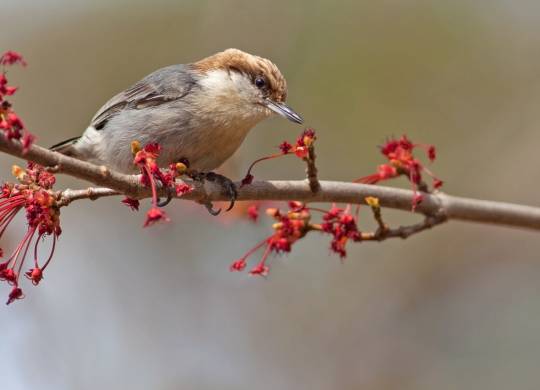
Brown-headed Nuthatch (Silla pusilla)
See, here's the real question about the eBird choices. Why choose the Bachman's Sparrow, when the adorably charismatic Brown-headed Nuthatch (Silla pusilla) was right there? The largest breeding population of this bird's global range is in Georgia, with a full 26% of the species depending on Georgia for its propagation. Yeah. This is definitely a Georgia breeder, but since the Bachman's Sparrow is a bit more endangered, has different living conditions, and is a bit more dependent on its Georgia population than the nuthatch here, that's likely why it was given the crown.
And yet...AND YET...in my opinion, this is the better state-dependent representative for Georgia. Sure, less of its breeding population is found in Georgia, but one-quarter of its global population isn't exactly something to sneeze at. And, importantly, this is where the majority of its population is housed, making Georgia more important for the Brown-headed Nuthatch than it is for the Bachman's Sparrow. But is it a better representative outside of that point? Well, it's recognizable, it's not terribly difficult to find, and it's certainly charismatic. I mean, look at that thing, it's cute as hell! Not that the sparrows aren't cute in their way, but the nuthatch? I wanna squeeze that thing, and apparently, they actually sound like rubber duckies. And no, charisma doesn't always mater, and it can be damaging for noncharismatic species conservation. But it can help.

Anything else? Well, using the same logic I have with other birds, it's an important representative of its habitat. The pine forests of the Southeastern USA are, unsurprisingly, in trouble. In fact, longleaf pine forests are kind of a massive deal from a conservation standpoint, and they're in a massive amount of trouble due to development and climate change. Some figures calculate a 95% loss of these forests by 2080, which is...bad, it's real bad, obviously. That kind of potential danger to their habitat, combined with their role within it, makes the nuthatch a good option. And apparently, Birds Georgia agrees with me.
Birds Georgia, for the record, is formerly known as the Georgia chapter of the National Audubon Society. And, while they still have affiliation to the organization, they've separated themselves from the legacy of its namesake. Credit where credit's due! Anyway, why bring them up? Birds Georgia has a number of species they highlight for conservation focus, with the Brown-headed Nuthatch being a major example. Their nestbox program focuses on building more nestboxes for a declining species across the state, and it's very much worked! 450 nest boxes have been installed across the state since 2015, and hopefully that doesn't stop! So, cute potential representative! But that's not the only conservation focus from Birds Georgia.
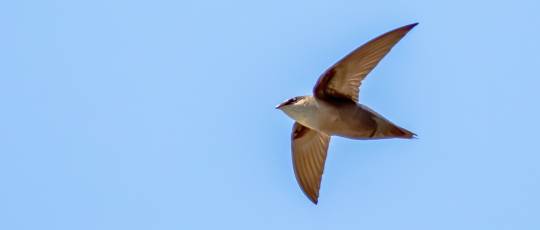
Chimney Swift (Chaetura pelagica)
From 2019 to 2020, Birds Georgia named the Chimney Swift their Conservation Focus for the year, and began an initiative to have nestboxes put out for the species across the state. Multiple towers were erected throughout the state by multiple conservation initiatives working with Birds Georgia, giving the birds more habitats outside of direct human settlements to breed and thrive in. But, why the Chimney Swift? They're sort of all over the place.
If you're from the eastern USA and walked outside in the morning or late afternoon, you've probably heard random chittering high above you, especially if you're in a city or town with chimneys on their buildings. If you look up, you've probably seen silhouettes of these guys flying at high speeds in the sky, mouths open to gather flying insects in the dawn and dusk. These are common birds all over the eastern US, as well as recognizable and easy to find and hear. So, why suggest them for Georgia? Because Georgia is tied with three other states for having the largest proportion of the breeding population for the species, at 6% of the species. Not a high number, but a significant proportion nonetheless. That makes it an intriguing choice for Georgia...and a few other places. So, this is probably not the last time we see this species on the polls.
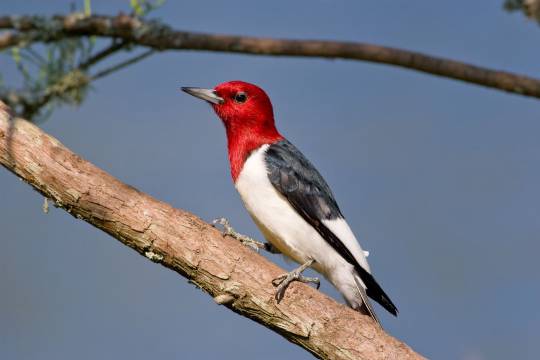
Red-headed Woodpecker (Melanerpes erythrocephalus)
But hey, if we're going for birds elevated by Birds Georgia, then we should probably highlight their actual mascot: the Red-headed Woodpecker (Melanerpe erythrocephalus). We've already talked about the importance of woodpeckers as keystone species in forested environments, and the Red-headed Woodpecker is definitely an example of that ecological role. In truth, the Pielated Woodpecker (Dryocopus pileatus), which was up for the Pennsylvania poll, actually widens holes made by the Red-headed Woodpecker for its own nest-cavities, meaning a keystone depends on a keystone.
Now, in terms of Georgia's population, the breeding population in the state is definitely not the bulwark for the species (that trophy belongs to Kansas with 11%), but the live oak forests the state is seeking to protect definitely houses the species in significant numbers state-wide. The reason Birds Georgia uses it in their logo is because, in 2014, the species was considered high-risk and on the decline in its range. As of 2022, the species is also suffering its highest region-wide decline in Georgia, tied with a few other states on that front well. Combine these facts with an iconic appearance, and the Red-headed Woodpecker is also a decent choice for State Bird from a conservation standpoint.
OK...one more. And this one's...a stretch.

Red-Shouldered Hawk (Buteo lineatus)
OK, it's not actually a stretch; I just wanted to say that because it's a tall image, and I thought it'd be funny. So, OK! The Red-shouldered Hawk (Buteo lineatus). Now, this is yet another species you can find in various places in the eastern USA, but its second largest breeding population in the country can be found in the Peach State, which is beat out by Florida. Trust me, though, Florida is one of the big three states in the South in terms of breeding bird populations. I try to get a raptor for each state, you'll notice, but why this raptor for Georgia, outside of the breeding population thing?
Well, firstly, there's the association of the species with swamps and woodlands, both of which are prominent Georgia habitats. They've got an extremely varied diet, going for most small prey items in their ranges, even weird ones like roadkill deer, crayfish, and screech owls. And while they're most common in Georgia, they're also most certainly seen in Georgia fairly commonly, especially after their recovery from DDT. But even then...why? Why have a hawk for the state of Georgia at...OK, some of you probably figured it out, I might as well just say it now.

Yup, Georgia's basketball team is the Atlanta Hawks. And yes, OBviously I could've gone for the Atlanta Falcons, but falcons make far less sense to highlight for the state, ironically. There are only three commonly seen species in the state, and none of them have Georgia as a major highlight of their breeding ranges. So, with that in mind, the Hawks seem like the team to highlight, and the best hawk for the state of Georgia is the Red-shouldered Hawk. With that said, is this really the best choice for Georgia's state bird? I mean...that's up to Georgians (and Tumblrites) to decide in the end.
So! An odd post, this one was. Some interesting choices in the end, but is this the most solid roster? Not sure. I have my guess as to the winner for this one, and honestly...it's not a bad choice if I'm right. But with that, it's time to leave it to you - the people! And the next time we have one of these posts, we'll be heading to a region and a state near and dear to me, personally. Time for the Nutmeg State, and the first state with a frequent flyer for a state bird!

See you next time, and happy birding!
#bird#birds#birding#birder#birders#birdwatching#bird watching#black birder#state bird#state bird initiative#georgia#birblr#birdblr#state birds initiative#brown thrasher#northern bobwhite#quail#bachman's sparrow#sparrow#swamp sparrow#savannah sparrow#brown-headed nuthatch#chimney swift#red headed woodpecker#red-shouldered hawk#hawk#atlanta hawks#bird tumblr#long post#poll
38 notes
·
View notes
Photo

Savannah Sparrow by Turk Images Savannah Sparrow (Passerculus sandwichensis) establishing its territory by singing on a fence post along a pasture south of Beaverhill Lake and east of Toehold, Alberta, Canada. 15 May, 2017. Slide # GWB_20170515_7748.CR2 Use of this image on websites, blogs or other media without explicit permission is not permitted. © Gerard W. Beyersbergen - All Rights Reserved Worldwide In Perpetuity - No Unauthorized Use. https://flic.kr/p/Gq1KgH
0 notes
Text
LeContes Sparrow Ammodramus leconteii
Lincoln’s Sparrow Melospiza lincolnii
Tree Sparrow Spizelloides arborea
Savannah Sparrow Passerculus sandwichensis
Song sparrow Melospiza melodia
Savannah sparrow Passerculus sandwichensis
Swamp Sparrow (Melospiza georgiana)
What, now, about these sparrows, which are which?
“I believe that this generation will either be the last to exist in any semblance of a civilized world or it will be the first to have a vision, a daring and a greatness to say:
“I will have nothing to do with this destruction of life. I will play no part in this devastation of this land. I am destined to live and work for peaceful construction for I am morally responsible for the world of today and of the generations of tomorrow. ~Richard St. Barbe Baker.
So when might you see a sparrow, or little brown bird? As the Nature Study Publishing Company aptly relates; “Of all animated nature, birds are the most beautiful in coloring, most graceful in form and action, swiftest in motion and most perfect emblems of freedom. They are withal, very intelligent and have many remarkable traits, so that their habits and characteristics make a delightful study for all lovers of nature. ”
Lincoln’s Sparrow (Melospiza lincolnii) is seen in a migratory pattern, watch for the Lincoln’s Sparrow in late April to the end of May, and again mainly in September. There are sightings in August and October as well, though one may be luckier in early May and September.
The Swamp Sparrow (Melospiza georgiana), another migratory sparrow, arrives in May and can be spotted throughout this month. Again, keep a look out in September and early October.
The American Tree Sparrow (Spizelloides arborea) is another little brown job more commonly seen in a migratory pattern, with the majority of sightings in March through May, and again in September and October, though the rare sighting occurs in February, throughout the summer, and between October to December.
Fox Sparrows ( Passerella iliaca ) are another migratory bird through this area. Watch for this little brown bird between April and beginning of May, and again in September and early October. There may be the occasional sighting in July or August.
Baird’s sparrow (Ammodramus bairdii) is seen through April and August, with the best of luck in August.
The Grasshopper Sparrow (Ammodramus savannarum)i is similarly seen through April and mid-August.
LeConte’s Sparrow (Ammodramus leconteii) is most commonly sighted as well through April all they way to July, however a few folks record seeing them in August and September.
Nelson’s Sparrow (Ammodramus nelsoni) can be seen mid May to middle of August, with the rare sighting occuring in September.
Chipping Sparrow (Spizella passerina) is another summer arrival coming in May and seen throughout June as well. The sightings taper off between July to rarely seen in November, and never seen across the winter months.
The Vesper Sparrow, Savannah Sparrow, Song Sparrow and Lincoln’s Sparrow arrive in the spring, stick around all summer, and leave in the fall. Look for the Vesper sparrow (Pooecetes gramineus) as early as late April, with the majority of the Vesper Sparrows arriving in May, sightings trail off in late August through October. The Savannah Sparrow (Passerculus sandwichensis) will arrive in very late April, and again the main sightings are between May and August. Sightings of the Savannah Sparrow trail off in September and October, though rare sightings occur in December. The Song Sparrow (Melospiza melodia) arrives earlier, beginning of April, and ornitholgists can see the Song Sparrow through the fall, with sightings trailing off in October, and none after this till next spring.
Clay-coloured Sparrow (Spizella pallida) is very similar, arriving In May, and also seen heavily through June and early July, with sightings tapering off through the summer and early fall, with rare sightings occurring in November, and none in the winter months.
The Harris’ Sparrow (Zonotrichia querula) is easiest to sight end of April, beginning of May, and again there are regular sightings in starting end of August, and through September and October. A few avid bird watchers have found the Harris’ Sparrow end of February, and beginning of July.
One has to be a most excellent bird watcher to catch a glimpse of a Field Sparrow (Spizella pusilla) , which may occur at the end of July, beginning of August.
Brewer’s Sparrow (Spizella breweri) also require a bird watcher of some skill, and sightings are best around the middle of May.
The White-crowned Sparrow (Zonotrichia leucophrys) is easiest to spot end of April and beginning of May, and again in September and October. There are regular sightings of the White-crowned sparrow between January to May, and the occasional sighting at the beginning of July.
The White-throated Sparrow (Zonotrichia albicollis), is mainly seen end of April through May, with the occasional sighting through the summer months. Again bird watchers find this little brown job in September and October, with a few stragglers sticking around November through February.
The Golden-crowned Sparrow (Zonotrichia atricapilla) is much harder to spot with minimal sightings, keep your eyes open in May.
From sights we pass to the consideration of sounds, and it is unfortunate that the two subjects have to be treated consecutively instead of together, since with birds they are more intimately joined than in any other order of beings; and in images of bird life at its best they sometimes cannot be dissociated;—the aërial form of the creature, its harmonious, delicate tints, and its grace of motion; and the voice, which, loud or low, is aërial too, in harmony with the form. So as you wander the Richard St. Barbe Baker Afforestation Area, or the Afforestation Area formerly known as George Genereux Park, please try to sight a sparrow, or perhaps, with a small bit of delight try to hear a sparrow. Compare the language, the shrill, the chirp, or the musical tune. Each has a melody unique to its own kind.
Do you not have the curiosity to know the songs of the marsh and woodlands? The story that is told from winter visitors, migrants, the summer breeders, and is there a season when the woodlands are silent? So pop out during the months outlined above, and see when the voices burst out altogether, hear the spring calls marking out the territory, the voices singing one to another. Which melodies are mysterious, and which are persistent? What is the charm which you find in nature? Find what happiness the ornithologist may derive from these shy creatures, very small and private, which fly from hikers when approached. Can you say that the pleasure of seeing and hearing them was purer, and much more lasting than pleasures of excitement. Can you picture the loveliness, the sunlit colours, and the grace of form motion, and melody which the brief glance into this world sends forth?
We know that as with sights so it is with sounds: those to which we listen attentively, appreciatively, or in any way emotionally, live in the mind, to be recalled and reheard at will.
The clouds are my family. When you cannot find me, it is because my sisters and brothers have called me. We are singing circles of prayers about the earth… ~James McGrath
For more information: A sparrow (two photographs) and more on sharp photographs. Victor Rakmil.
Beautiful Sparrow. Michael Powell.
Bird count reports Saskatoon Nature Society.
Birding News. American Birding Association. Saskatchewan Bird news by Date. Easily find posts which mention American Birding Association rare birds.
Chipping Sparrow – Spizella passerina. Midwestern Plant Girl, Midwestern Plants.
Harris’s Sparrow Words from Manelli
Hummer and Sparrow. RV John
Marcotee, Amanda. 12-year-old birder spots rare bird in Saskatchewan. Eurasian Tree Sparrow rarely spotted in the province CBC News. May 19, 2015
Nature Saskatchewan: Bird Checklist Saskatchewan. Regina Backyard Birds: Finches, Sparrows, Siskins. April 28, 2015. Prairie Nature Blogspot.
Saskatchewan. Bird Watching Resources for Bird Watching by Fatbirder. Fatbirder – linking birders worldwide… Wildlife Travellers see our sister site: WAND
Saskatchewan Birds. Nature and Scenery. Saskatchewan Birds and Nature. Nick Saunders.
Song Sparrow. Seattle Park Lover, Park Review.
Sparrow Fledglings. A Fairy mind, The storyteller’s abode
Sparrow Cheatsheet. Textile Ranger, Little Wild Streak.
Sparrow Highrise. Always Backroads Donna Catterick
Stand out sparrow. Tildy 1, the beespeak.
Sutter, Glen. Sparrows – Native Encyclopedia of Saskatchewan. Canadian Plains Research Centre. University of Regina 2006.
Swamp Sparrow Ted Jennings, RPjphoto.net.
Tree Sparrows. Submit your sightings.
White crowned Sparrow Notes in nature.
White throated Sparrow GXC Trails
Wordless Wednesday: American Tree Sparrow. Leslie, Under my Apple Tree.
For more information:
Richard St. Barbe Baker Afforestation Area is located in Saskatoon, SK, CA north of Cedar Villa Road, within city limits, in the furthest south west area of the city. Wikimapia Map: type in Richard St. Barbe Baker Afforestation Area Google Maps South West Off Leash area location pin at parking lot Web page: https://stbarbebaker.wordpress.com Where is the Richard St. Barbe Baker Afforestation Area? with map Facebook: StBarbeBaker Facebook group page : Users of the St Barbe Baker Afforestation Area Facebook: South West OLRA If you wish to support the afforestation area with your donation, write a cheque please to the “Meewasin Valley Authority Richard St. Barbe Baker Afforestation Area trust fund” (MVA RSBBAA trust fund) and mail it to Richard St. Barbe Baker Afforestation Area c/o Meewasin Valley Authority, 402 Third Ave S, Saskatoon SK S7K 3G5. Thank you kindly! Twitter: St Barbe Baker
Pinterest richardstbarbeb
A bird does not sing because it has an answer. It sings because it has a song. ~Chinese Proverb
Little Brown Birds What, now, about these sparrows, which are which? "I believe that this generation will either be the last to exist in any semblance of a civilized world or it will be the first to have a vision, a daring and a greatness to say:
#Afforestation Area formerly known as George Genereux Park#American Tree Sparrow#Ammodramus bairdii#Ammodramus leconteii#Ammodramus nelsoni#Ammodramus savannarum#aves#Baird&039;s Sparrow#birds#Brewer&039;s Sparrow#Canada#Chipping Sparrow#Clay-coloured Sparrow#Fox Sparrow#Fox Sparrows#grasshopper sparrow#LeConte&039;s Sparrow#Lincoln&039;s Sparrow#Meewasin Valley Authority#Melospiza georgiana#Melospiza lincolnii#Melospiza melodia#Nelson&039;s Sparrow#ornithology#Passerculus sandwichensis#Passerella iliaca#Pooecetes gramineus#Richard St. Barbe Baker#Richard St. Barbe Baker AFforestation ARea#Saskatchewan
1 note
·
View note
Photo

New Post has been published on http://xn--80aaolcalcnig8a0a.xn--p1acf/2017/03/09/savannah-sparrow-belting-one-out/
Savannah Sparrow Belting One Out
Posted by Jeff Dyck on 2012-05-15 02:31:15
Tagged: , Savannah , Sparrow , Savannah Sparrow , Passerculus sandwichensis , Cattail , Bullrush , Calling , Singing , Oak Hammock , Marsh , Oak Hammock Marsh , Stonewall , Manitoba , Birds , Jeff Dyck , SpecAnimal , SuperShot , AvianExcellence
0 notes
Text

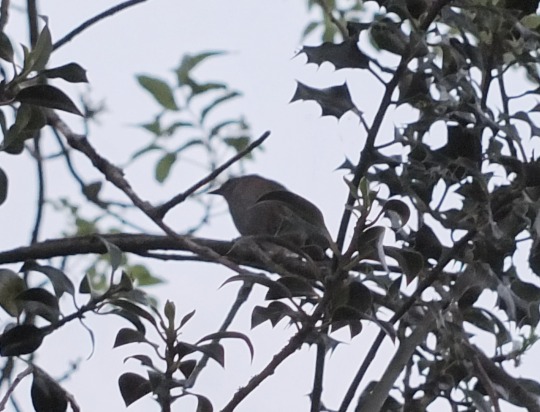

poet spotted 🫵
#TINY ASSHOLE. HE WOULDNT STAY STILL OR MOVE OJT KF THE BUSHES SO NOW HE IS A BLOB.#poet boy#passerculus posting
2 notes
·
View notes